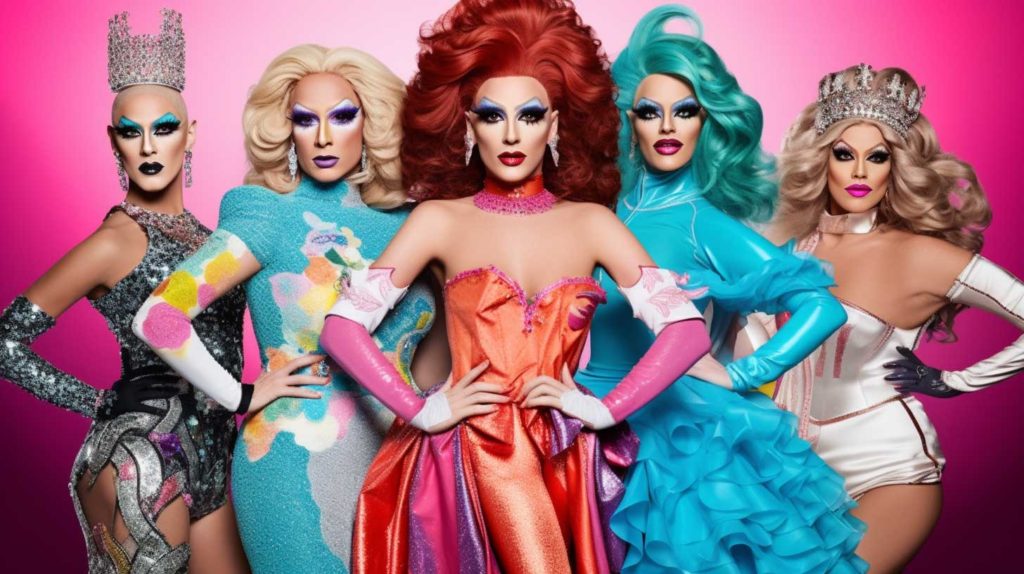
Introduction
The Emergence and Significance of Drag Community
The drag community, a vibrant part of the LGBTQ+ sphere, is known for its unique drag vocabulary, self-expression, creativity, and resilience. From underground clubs to reality TV, drag queens have created a unique cultural niche. They challenge norms, celebrate diversity, and enrich our language with their drag vocabulary.
The term “drag,” thought to come from theatre slang for wearing women’s clothes, now represents diverse performance art. It’s more than men dressing as women; it’s artists expressing identities beyond traditional gender norms. The drag community shows the power of performance as personal and political expression.
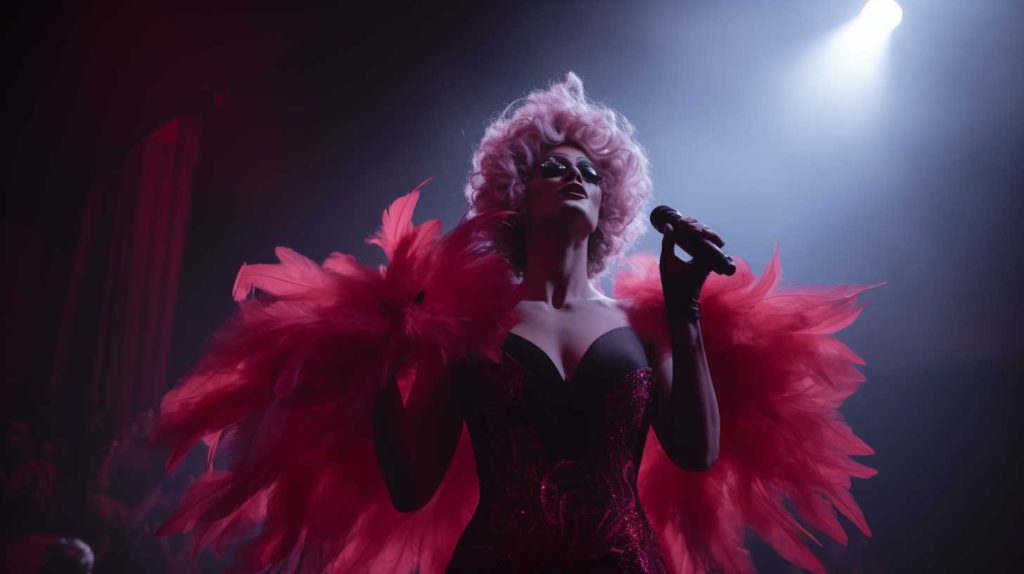
Understanding the Language of Drag
To fully appreciate the artistry and nuances of drag, one must delve into its unique vocabulary. The language of drag is as colorful, flamboyant, and diverse as the queens themselves. It’s a lexicon that encapsulates the history, struggles, triumphs, and humor of the drag community.
Understanding drag vocabulary is not just about learning new words; it’s about gaining insight into a culture that has thrived on the fringes of mainstream society. It’s about recognizing the creativity and resilience of a community that has used language as a tool for survival and celebration.
From “reading” and “throwing shade” to “serving realness,” drag vocabulary is a testament to the community’s ability to reclaim and redefine language. These terms, born out of necessity and solidarity, have become an integral part of drag performances and interactions.
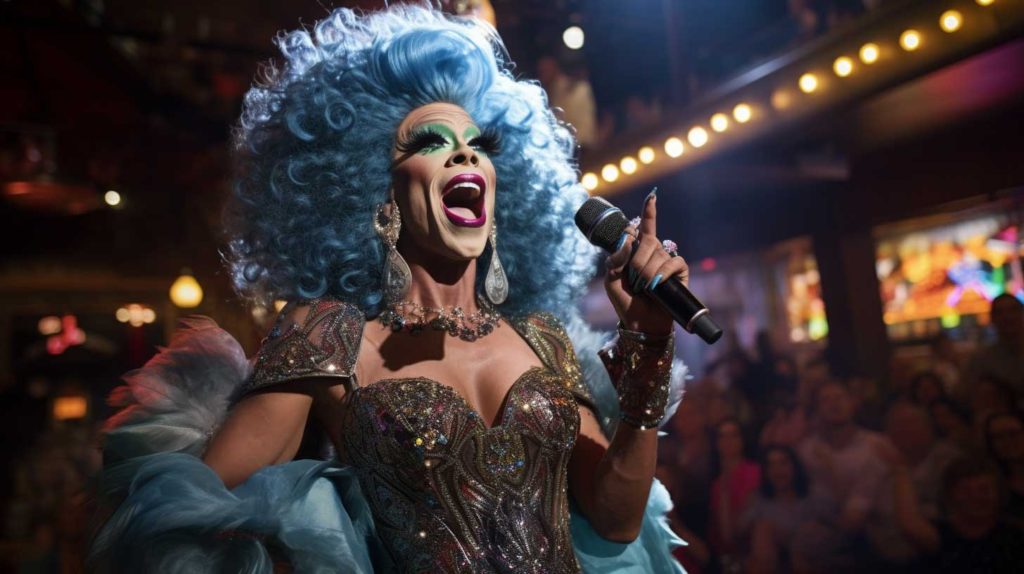
The Birth and Evolution of Drag Vocabulary
A Brief History of Drag and Its Unique Vocabulary
The art of drag and its unique vocabulary have roots that reach far back into history. The term “drag” itself is believed to have originated in the theater world, standing for “Dressed Resembling A Girl,” describing male actors in female roles. However, the concept of drag and its language extends far beyond this definition and far back into history.
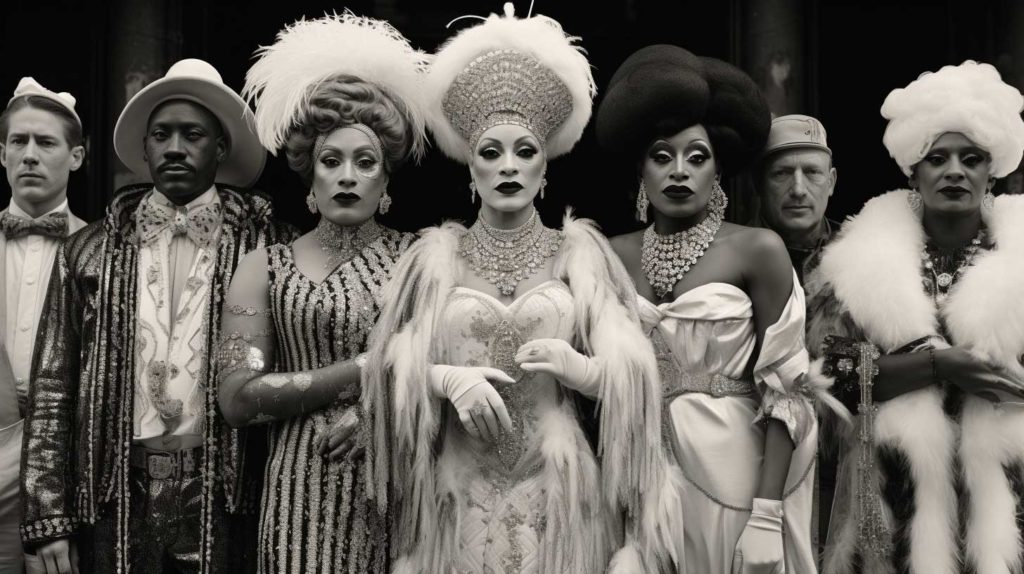
In ancient societies, forms of drag were incorporated into rituals and performances. For instance, in ancient Rome, men played women’s roles in theater. Some Native American tribes revered Two-Spirit individuals, embodying both masculine and feminine traits, performing both male and female roles in ceremonies. Men commonly played female roles in Elizabethan era plays because society didn’t allow women on stage. This practice, known as “breeches roles,” is one of Western culture’s earliest drag forms.
The 20th century marked a significant turning point in the history of drag queens. It was during this time that drag began to emerge from the shadows, moving from the fringes of society to the mainstream. The Stonewall Riots in 1969, a pivotal moment in the gay rights movement, were led in part by drag queens. This event marked a turning point in the visibility and acceptance of drag in society.

For more detailed information on the history of drag queens, you can visit this comprehensive guide.
The Influence of Language in Shaping and Expressing Drag Culture
Language plays a crucial role in shaping and expressing drag culture. The unique vocabulary of drag is not just a collection of words; it’s a form of communication that encapsulates the history, struggles, triumphs, and humor of the drag community.
Drag language is a testament to the community’s ability to reclaim and redefine language. These terms, born out of necessity and solidarity, have become an integral part of drag performances and interactions. From “reading” and “throwing shade” to “serving realness,” drag vocabulary is a testament to the community’s ability to reclaim and redefine language.
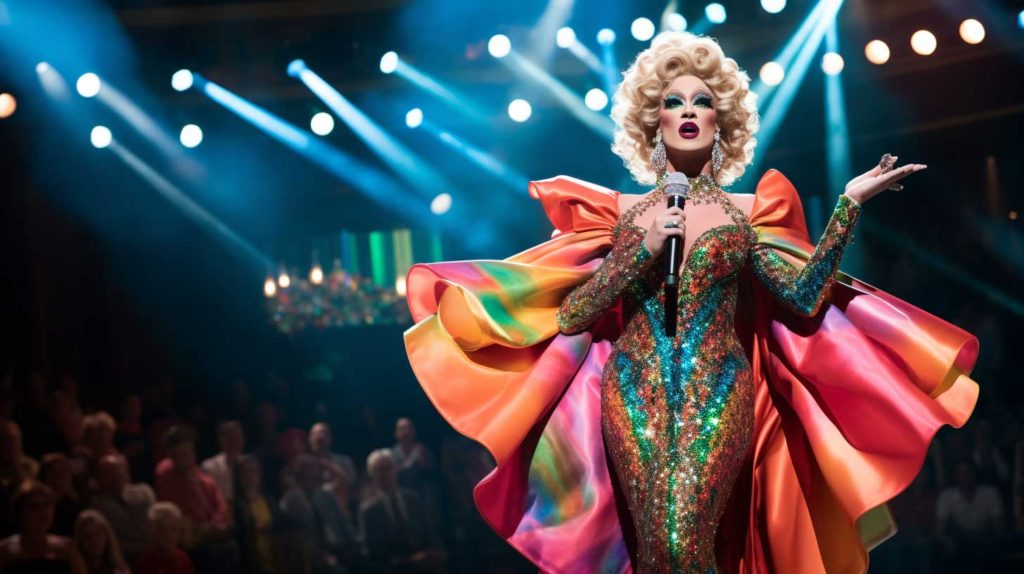
Understanding the language of drag is not just about learning new words; it’s about gaining insight into a culture that has thrived on the fringes of mainstream society. It’s about recognizing the creativity and resilience of a community that has used language as a tool for survival and celebration.
Exploring Essential Drag Vocabulary : A Colorful Lexicon
The drag community is known for its vibrant, flamboyant, and often humorous language. This unique vocabulary is an essential part of drag culture, adding a layer of richness and depth to the performances and interactions within the community. Let’s explore some of these key terms:

Reading and Throwing Shade
“Reading” is the art of humorously criticizing or mocking someone, often done in a playful and witty manner. It’s a form of banter within the drag community, showcasing a queen’s sharp wit and humor.
“Throwing shade” is similar to reading but tends to be more subtle and indirect. The art of insult disguised as a compliment requires a keen sense of humor and quick thinking.
Fishy and Realness
“Fishy” is a term used to describe a drag queen who looks extremely feminine, or one who convincingly resembles a cisgender woman. The term is a compliment in the drag community, praising a queen’s ability to blur the lines between drag and biological femininity.
“Serving realness” is a phrase used when a drag queen convincingly embodies a specific look or persona. It’s about delivering a performance so authentic and detailed that it becomes “real.”
Slay and Werk
“Slay” and “werk” are terms of encouragement and praise in the drag community. To “slay” is to excel or do exceptionally well, while “werk” is a cheer for someone who is giving their all in a performance.
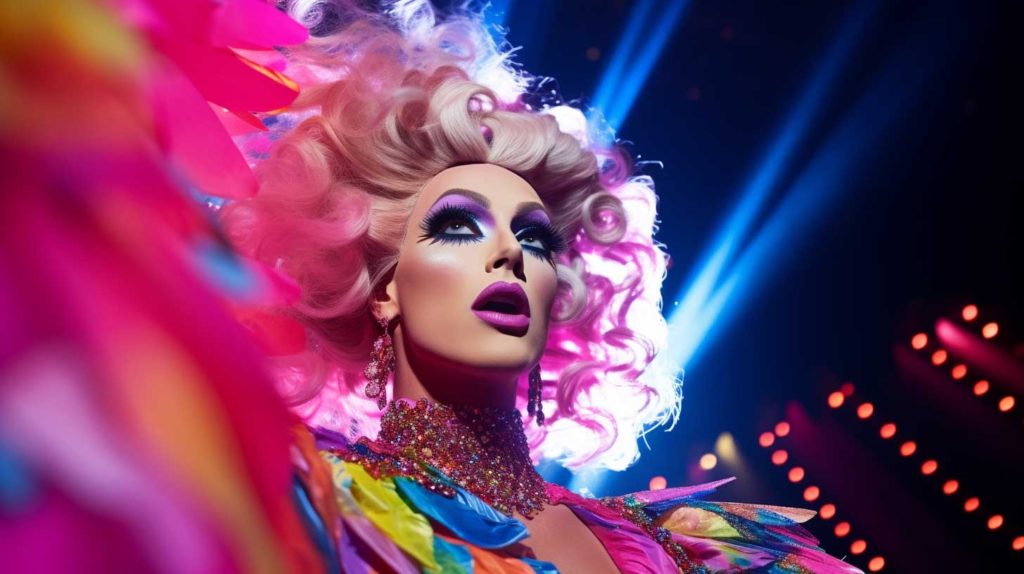
Toot, Boot, Heathers, and Boogers
“Toot” and “boot” are terms popularized by the TV show “RuPaul’s Drag Race.” A “toot” is a nod of approval, while a “boot” is a thumbs down or disapproval.
“Heathers” and “boogers” are terms used to differentiate the popular, polished queens (“Heathers”) from the less popular or less polished ones (“boogers”).
Kiki, Purse First, and Garage Doors
A “kiki” is a casual gathering or a party, often involving gossiping and laughter. “Purse first” is a phrase coined by drag queen Bob the Drag Queen, referring to the act of entering a room with one’s purse leading the way.
“Garage doors” is a term used to describe a style of eye makeup where one color covers the entire eyelid, resembling a closed garage door.
Eleganza Extravaganza and Cheesecake
“Eleganza Extravaganza” is a phrase used to describe a look that is extremely elegant or over-the-top glamorous. “Cheesecake” refers to a queen who is serving up sex appeal.
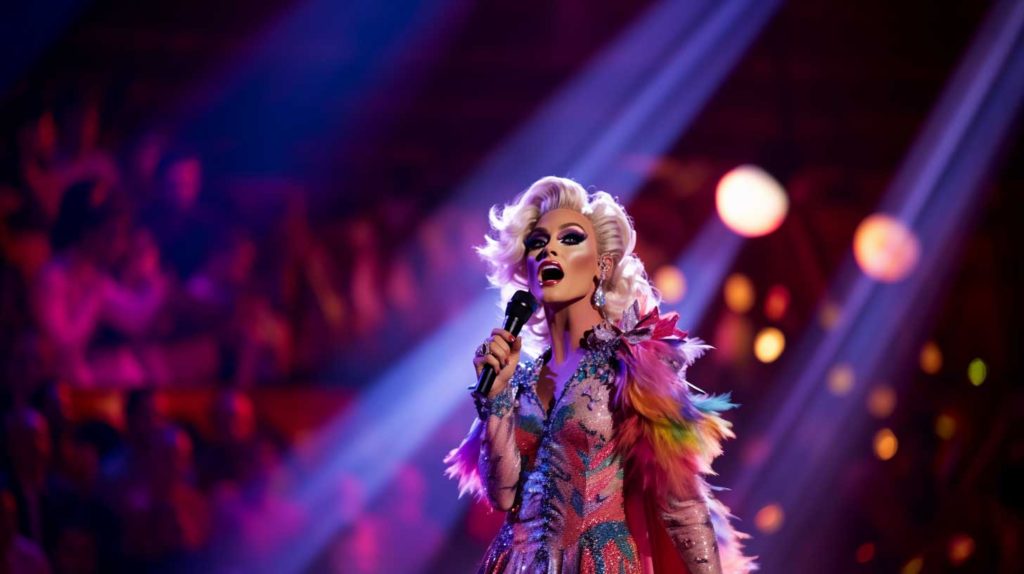
No Tea, No Shade
“No tea, no shade” is a phrase used before giving an opinion or a critique, indicating that the speaker means no disrespect.
These terms, along with many others, contribute to the fun and creativity inherent in drag language. They encapsulate the spirit of the drag community, reflecting its humor, resilience, and flair for the dramatic. For a more in-depth exploration of drag culture and its impact on mainstream beauty, you can visit this comprehensive guide.
The Role of Vocabulary in Drag Performances
Language is an integral part of the drag community, shaping performances and expressing a drag queen’s persona. The unique vocabulary used in the drag community is not just a collection of words; it’s a form of communication that encapsulates the history, struggles, triumphs, and humor of the drag community.
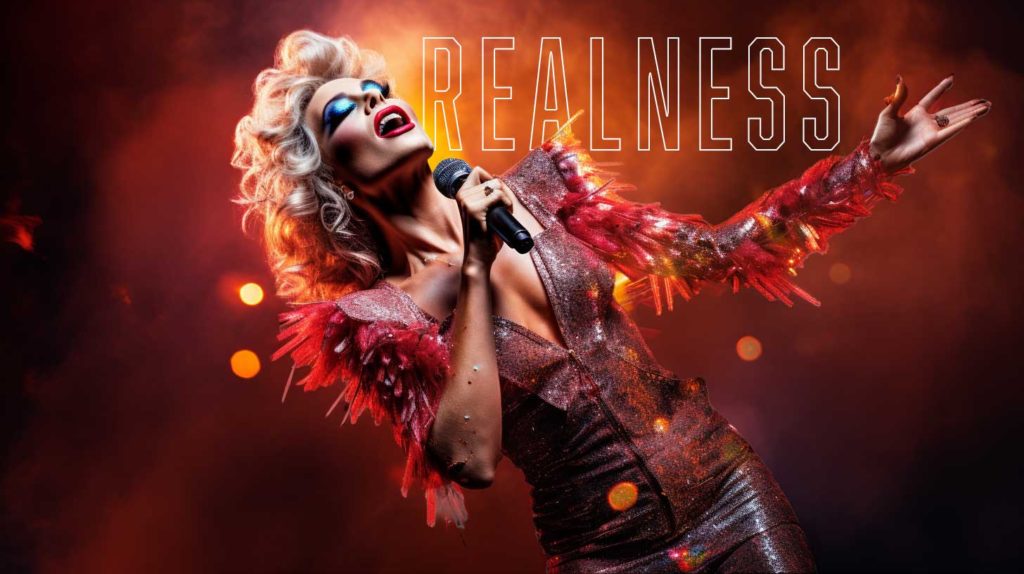
Expressing a Drag Queen’s Persona Through Vocabulary
In the drag world, a queen’s persona extends beyond looks and performance. It’s also about their unique communication style. The language they use, the terms they choose, and their delivery all shape their character. For example, a queen might use “slay” and “werk” to show confidence and fierceness. They might “throw shade” to display their wit and sass. These terms, among others, add depth and nuance to a queen’s persona.
The Use of Vocabulary in Performances
Vocabulary plays a crucial role in drag performances. Queens use language to engage with the audience, to deliver punchlines, and to express their character’s personality. The use of drag vocabulary can turn a good performance into a great one, adding an extra layer of authenticity and engagement.
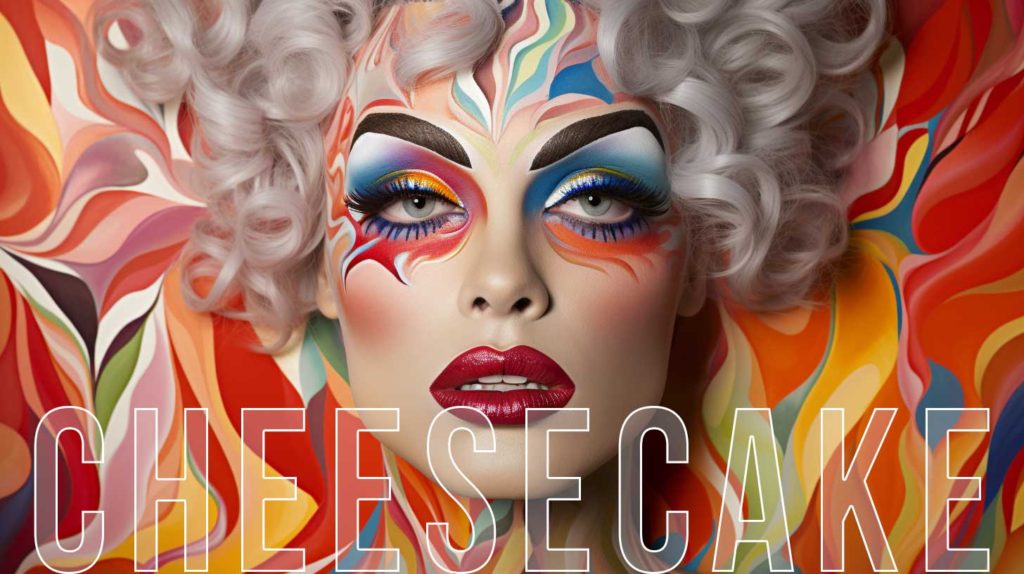
For instance, during a lip-sync performance, a queen might “serve realness” by embodying the song’s emotion and delivering a convincing performance. Or during a comedy routine, a queen might “read” another queen, delivering a humorous critique that gets the audience laughing.
Famous Drag Queens and Their Use of Language
Many famous drag queens use language in unique ways. RuPaul, one of the most well-known drag queens in the world, has popularized many drag terms through her TV show “RuPaul’s Drag Race.” Phrases like “sashay away” and “shantay, you stay” have become iconic in the drag community, thanks to RuPaul’s influence.
Bianca Del Rio, another famous drag queen, is known for her sharp wit and her ability to “throw shade” with humor and style. Her use of language is a key part of her persona, showcasing her quick thinking and her comedic talent.
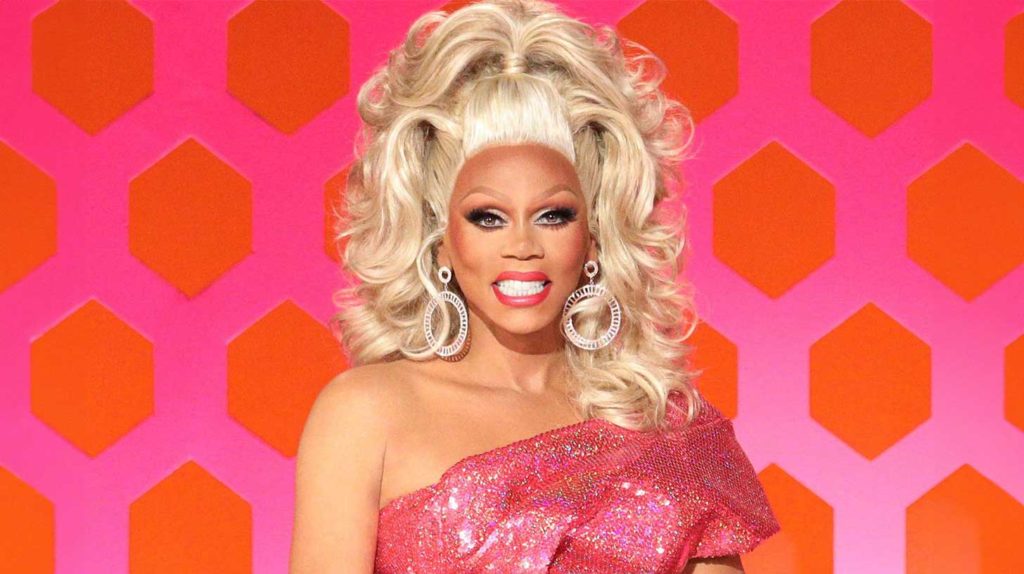
These examples highlight the importance of vocabulary in the drag community, showing how language can shape a queen’s persona and enhance their performances. For a more in-depth exploration of the role of research in drag performances, you can visit this comprehensive guide.
The Impact of Drag Vocabulary on Mainstream Culture
Drag culture, with its vibrant performances and unique vocabulary, has had a significant influence on mainstream language and culture. The language of drag, once confined to the stages and dressing rooms of drag shows, has found its way into everyday conversations, reflecting the growing acceptance and visibility of the drag community.
Drag Vocabulary in Everyday Language
Terms like “shade,” “werk,” and “realness,” once exclusive to the drag community, are now part of the mainstream lexicon. People use these words in everyday conversations, on social media, and in popular TV shows and movie. This adoption of drag vocabulary into mainstream language is a testament to the influence and appeal of drag culture.
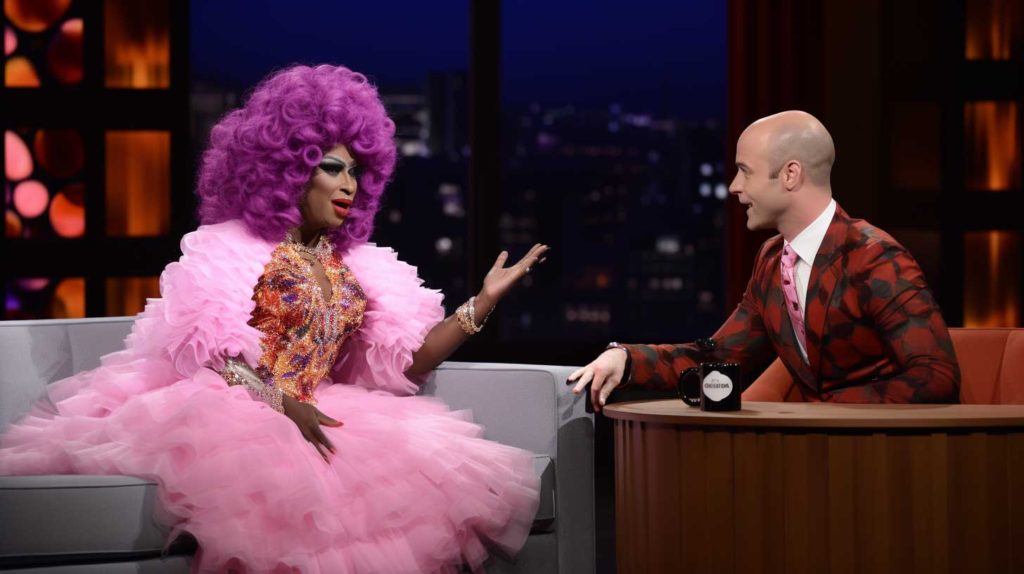
People now use the term ‘throwing shade’ popularly to subtly insult someone. “Slay,” a drag term of praise, is used widely to commend exceptional performance. “Realness,” describing a convincing drag persona, now refers to authenticity in various contexts.
The Influence of Drag Queens on Mainstream Culture
Famous drag queens like RuPaul have played a significant role in bringing drag vocabulary to the mainstream. Through TV shows like “RuPaul’s Drag Race,” drag queens have reached a global audience, introducing them to the unique language and culture of drag. These shows have not only entertained audiences but also educated them about the drag community and its rich vocabulary.
Drag queens have also influenced mainstream culture through their performances, their fashion, and their outspoken advocacy for LGBTQ+ rights. They have challenged societal norms, pushed boundaries, and used their platform to promote acceptance and diversity.
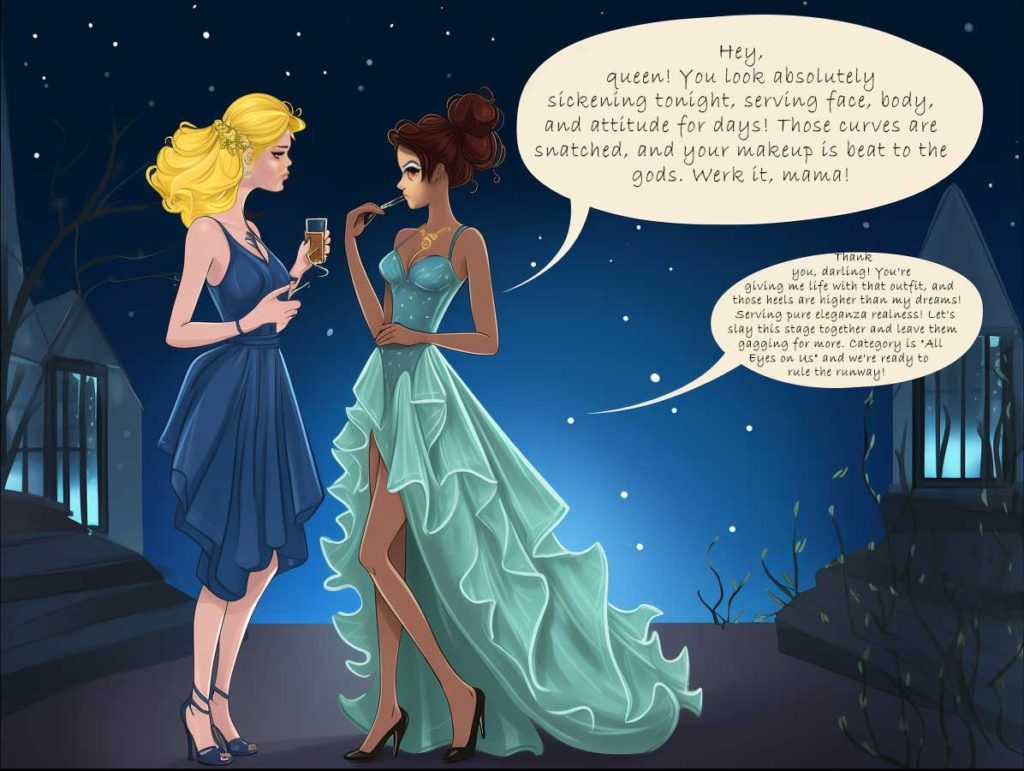
The Power of Language in Promoting Acceptance and Understanding
The adoption of drag vocabulary into mainstream language is more than just a linguistic trend; it’s a sign of societal change. It reflects a growing acceptance and understanding of the drag community and the LGBTQ+ community as a whole.
Language has the power to shape our perceptions and attitudes. By using drag vocabulary, we acknowledge and celebrate the drag community’s creativity, resilience, and influence.We also actively promote a culture where we celebrate diversity, accept and understand each other, and everyone freely expresses their true selves.
For a more in-depth exploration of the art of drag and its impact on mainstream culture, you can visit this comprehensive guide.
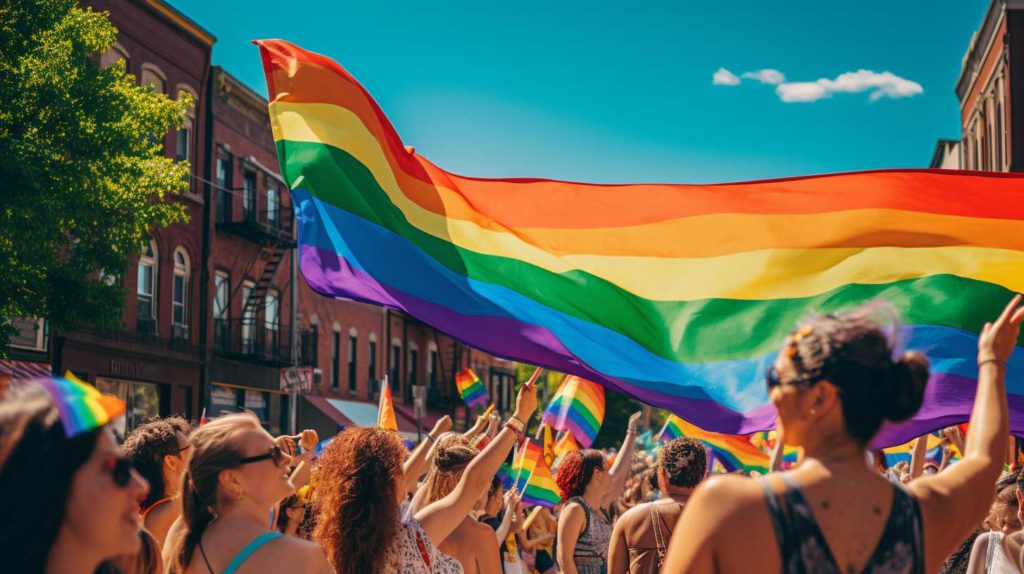
KEYPOINTS
- The drag community is a vibrant and dynamic facet of the LGBTQ+ sphere, known for its self-expression, creativity, and resilience.
- Understanding drag vocabulary is crucial for appreciating the art of drag and gaining insight into the drag community.
- The unique vocabulary of drag encapsulates the history, struggles, triumphs, and humor of the drag community.
- Vocabulary plays a crucial role in drag performances, shaping a queen’s persona and enhancing audience engagement.
- Famous drag queens, such as RuPaul and Bianca Del Rio, have popularized many drag terms through their performances and TV shows.
- Drag vocabulary has influenced mainstream language and culture, with terms like “shade,” “werk,” and “realness” now part of the mainstream lexicon.
- The adoption of drag vocabulary into mainstream language reflects a growing acceptance and understanding of the drag community.
Conclusion: The Power and Importance of Drag Vocabulary
Understanding the unique vocabulary of the drag community is more than just learning a set of new words. It’s about gaining insight into a vibrant and dynamic culture, appreciating the artistry and creativity of drag performances, and acknowledging the resilience and spirit of the drag community.
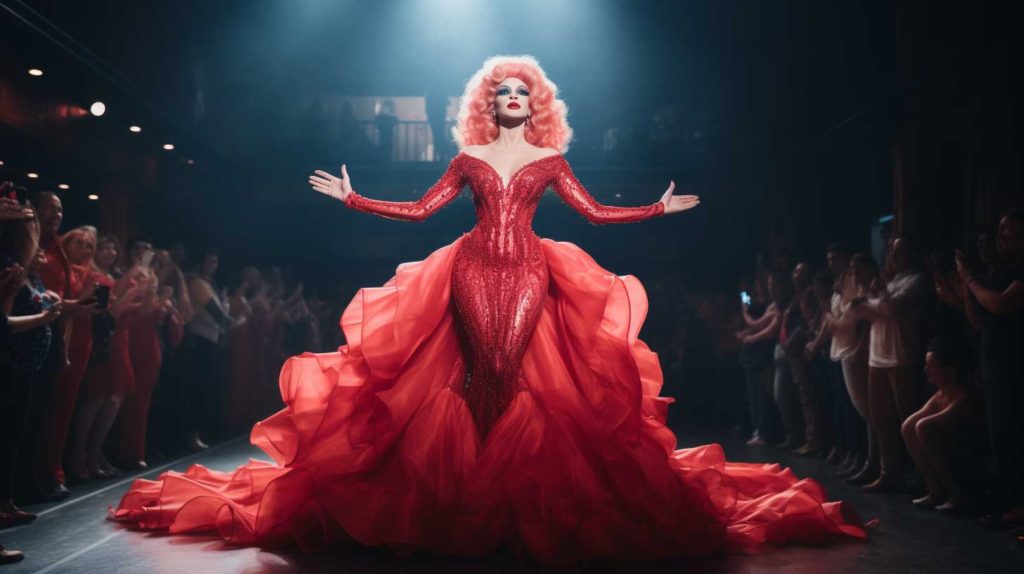
Recap: The Significance of Drag Vocabulary
From “throwing shade” to “serving realness,” each term in the drag vocabulary encapsulates a piece of the community’s history, struggles, and triumphs. These words, born out of necessity and solidarity, have become an integral part of drag performances and interactions. They add depth and nuance to a queen’s persona, enhance the engagement of performances, and contribute to the fun and creativity inherent in drag culture.
Moreover, the influence of drag vocabulary extends beyond the drag community. It has permeated mainstream language and culture, reflecting the growing visibility and acceptance of the drag community. It’s a testament to the power of language in shaping perceptions, promoting understanding, and celebrating diversity.
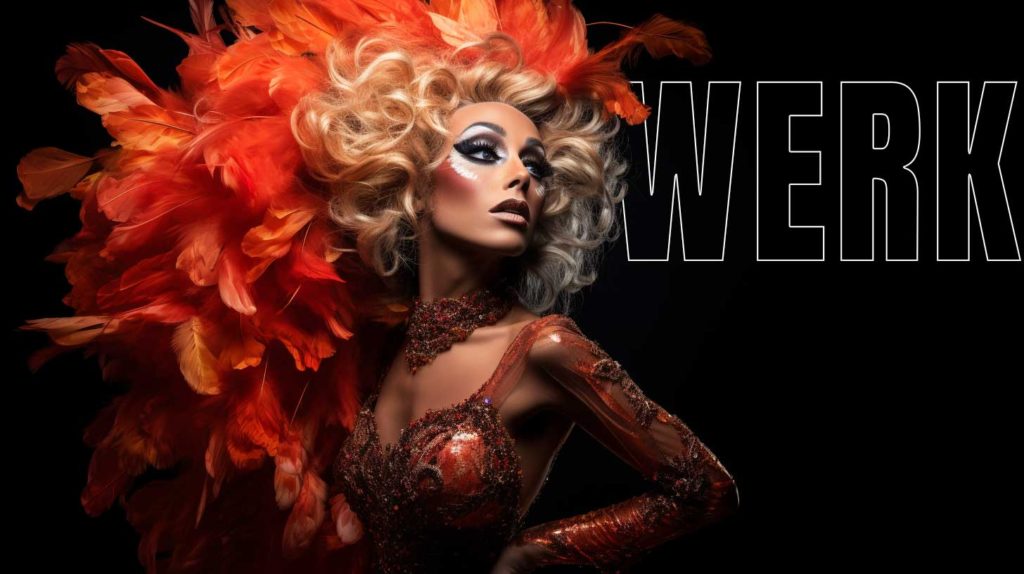
Your Journey Into the Drag Community
We encourage you to continue exploring and engaging with the drag community. Attend drag shows, support local drag queens, and immerse yourself in the rich culture and history of drag. The more you learn, the more you’ll appreciate the artistry, creativity, and resilience of this vibrant community.
Remember, understanding drag vocabulary is just the first step. There’s a whole world of drag culture waiting for you to discover. So, don’t just stand there, let’s get to it. Strike a pose, there’s nothing to it. Werk!
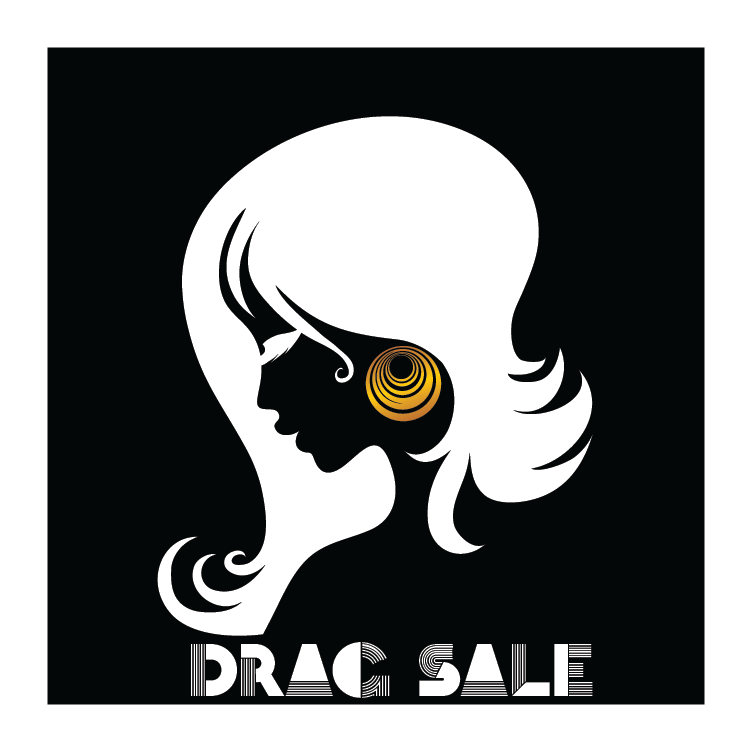
Your comment is awaiting moderation.
how do temp mail work